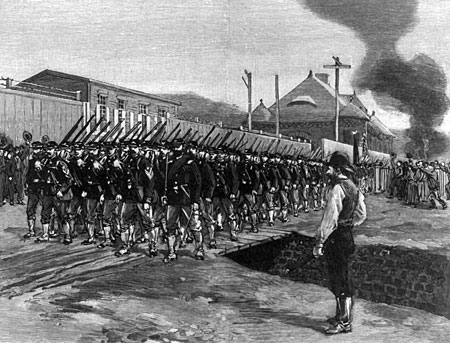Homestead Strike
Six years after the Haymarket Riot, Henry Frick cut wages at Carnegie Steel and the union called for a strike at the plant in Homestead, PA. Frick wanted to get rid of the union so he hired a private police force called the Pinkerton National Detective Agency to break up the strike. When the Pinkertons tried to stop the strike, several people were killed in a shootout. When one of the more radical strikers tried to kill Frick, the strike was called off by the union and the plant reopened. This was known as the Homestead Strike.

Homestead strike
Industrialist George Pullman built a town for his workers who made his railroad sleeping cars. The town had family homes, a school, and a bank. During an economic depression, Pullman cut the salaries of his workers by 25 percent and laid off some workers. In 1894 a group of workers tried to negotiate with Pullman and he fired three of the group’s leaders. Labor organizer Eugene Debs called for a boycott of Pullman cars and encouraged worker strikes across the country. Debs was one of the founders of the IWW and he ran for president five times as a Socialist Party candidate.
The Pullman Strike included over 100,000 railway workers. It disrupted mail delivery. Railroad owners asked the federal government for help. Under the Sherman Antitrust Act the government argued that union activity formed a trust that disrupted railway traffic, which was illegal. President Grover Cleveland sent federal troops to see that strikers returned to work. The government’s actions supported corporate interests and limited any gains that unions had made previously.